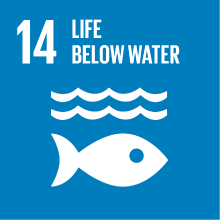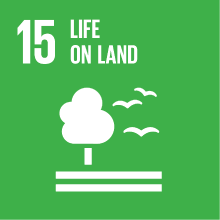GERMAN LANGUAGE
- Academic year
- 2019/2020 Syllabus of previous years
- Official course title
- LINGUA TEDESCA
- Course code
- CT0426 (AF:306615 AR:168631)
- Modality
- On campus classes
- ECTS credits
- 12
- Subdivision
- Class 1
- Degree level
- Bachelor's Degree Programme
- Academic Discipline
- L-LIN/14
- Period
- 2nd Semester
- Course year
- 2
- Where
- VENEZIA
- Moodle
- Go to Moodle page
Contribution of the course to the overall degree programme goals
The course German language 1, class 1, is part of the fundamental disciplines of the degree programme “Languages, civilizations and language sciences” and contributes to the objective of "a solid practical and theoretical preparation in two foreign languages". The course, which consists of the theoretical module (30 hours) and the linguistic exercises (about 150 hours), constitutes the first stage of an itinerary which, in a three years’ period, aims to bring the student to a phonological, morphological, syntactic and lexical knowledge corresponding to level C1 of the common European framework as well as to the ability to apply it in the comprehension and production of German texts.
Expected learning outcomes
Knowledge and understanding applied: ability of meta-linguistic reflection, also in contrast with Italian, about fundamental phonological, phonetic, morphological and syntactic structures of German. Ability to use the appropriate terminology. Ability to understand an academic lecture in German. Ability to understand and write short narrative texts. In general, the ability to produce (level B1+) and understand (level B2) written and oral texts in German.
Making judgements: Ability to independently resolve comprehension problems with German texts. Ability to judge the phonetic correctness of oral productions. Ability to judge the correctness of morphosyntactic productions written in German L2.
Communication skills: receptive skills at level B2, e.g. ability to follow a lecture on a linguistic argument if the exposure is clear and enriched with examples. Ability to understand simple topical articles and short narrative texts. Productive abilities at level B1+, e.g. ability to write simple texts on familiar topics and to narrate a story or the plot of a book or movie. Interactive skills at level B1+, e.g. being able to participate in conversations about familiar topics of personal interest or pertinent to everyday life. Ability to take actively part in the interaction in the classroom, in the virtual classroom and in the language classes.
Learning skills: Ability to take notes during a university lecture. Ability to properly use the bilingual and monolingual dictionary. Ability to use language resources on the Internet. Ability to use the tools of the virtual classroom (Moodle).
Pre-requirements
Contents
Language exercises of the linguistic experts (CEL), (four parallel groups E1A, E1B, E1C, E1D, first and second semester): they are directed at the receptive, productive and interactive written and oral skills proposing texts about current topics as the starting point of the activities in the classroom (reading / listening, discussion, productions written), also aiming at the acquisition and consolidation of vocabulary and grammatical structures of level B1+/B2. There will also be exercises in small groups (E2), especially for the correction of individual works.
Tutoring (offered by advanced students or doctoral students, any activation will be notified with an online announcement of the teacher): exercises of written production (short story) in small groups.
Self-study: reading short narrative texts made available in the virtual classroom.
Referral texts
ASPEKTE NEU. MITTELSTUFE DEUTSCH. LEHRBUCH B1 PLUS. Di Ute Koithan, Helen Schmitz et. al. Berlin: Langenscheidt 2014, 191 pagg. (ISBN 978-3-12-605016-6).
ASPEKTE NEU. MITTELSTUFE DEUTSCH. ARBEITSBUCH B1 PLUS MIT AUDIO-CD. Di Ute Koithan, Helen Schmitz et. al. Berlin: Langenscheidt 2014, 184 pagg. (ISBN 978-3-12-605017-3).
*** Mandatory texts for the teacher’s module:
Peter Paschke: Deutsche Sprache 1 (this Reader will be available online in the virtual moodle class at the beginning of the second semestre), includes further references.
Kehlmann, Daniel: Ruhm. Ein Roman in neun Geschichten, Reinbek: Rowohlt Taschenbuch Verlag 2010. Capitolo 1, pp. 7-23. [Biblioteca Palazzo Cosulich: TEDESCO T 7 KEH 4]
Schirach, Ferdinand v.: Schuld. Stories, München: Piper 2010. Capitolo „Kinder“, pp. 53-63 [Biblioteca Palazzo Cosulich: TEDESCO T 7 SCHI 2]
*** Suggested reference grammars (with exercises):
Hilke Dreyer, Richard Schmitt, LEHR- UND ÜBUNGSBUCH DER DEUTSCHEN GRAMMATIK – AKTUELL NEUBEARBEITUNG, Ismaning: Hueber 2012, 392 pagg. (ISBN 978-3-19-307255-9 ) or the Italian edition: Hilke Dreyer, Richard Schmitt, GRAMMATICA TEDESCA CON ESERCIZI – NUOVA EDIZIONE, Ismaning: Hueber 2013, 360 pagg. (ISBN 978-3-19-047255-0).
*** Suggested German-German dictionaries:
WAHRIG DEUTSCHES WÖRTERBUCH, Gütersloh: Bertelsmann 2011, 1728 pagg. (ISBN 978-3577075954) [anche: ed. Zanichelli 2007, ISBN 9788808166760] or another edition (also available on CD-ROM), or:
DUDEN UNIVERSALWÖRTERBUCH, Mannheim: Bibliographisches Institut 2011 (7a ed.), 2112 pagg., (ISBN 978-3411055074) or with CD-ROM (ISBN 978-3411714247) or another edition (also available on CD-ROM).
It might be useful to use a specific dictionary for German as a foreign language:
PONS Großwörterbuch Deutsch als Fremdsprache (von W. Wolski, Stuttgart: Klett 2011, mit CD-ROM, 978-3125170476), also online http://de.pons.com/%C3%BCbersetzung/deutsch-als-fremdsprache , or the similar dictionarys of LANGENSCHEIDT or WAHRIG.
*** Suggested German-Italian dictionaries:
IL NUOVO DIZIONARIO DI TEDESCO. DIZIONARIO TEDESCO-ITALIANO, ITALIANO-TEDESCO, di L. Giacoma e S. Kolb, Bologna: Zanichelli 2009, 2672 pagg., (ISBN 978-8808177681) or another edition (also available on CD-ROM).
Assessment methods
Part a) meta-linguistic skills and their application:
Test 1: test on the teacher’s module (questions about concepts and terminology of phonology, morphology and syntax; questions on the application of knowledge: phonetic transcription, gender and plural forms of nouns, verb valency), 45 min.,
Test 2: grammar test (gap filling and transforming exercises), 60 min.,
Part b) written skills (receptive and productive):
Test 3: Reading comprehension (Leseverstehen) of a journalistic (or similar) text with open questions, 30 min.,
Test 4: Written expression (short story based on a picture), 90 min., both with monolingual dictionary.
Test 1 is specific to class 1 (Prof. Paschke), while tests 2-4 are common to both classes.
If the students passes both tests of a written part in the same examination period, the results remain valid for the other examination periods of the same academic year.
Until all parts are passed, the student must re-enroll for the examination in order to be admitted to the missing part/parts.
If the student does not pass all parts within the last examination period (January), the results achieved so far will be cancelled.
The final grade is calculated as follows:
Test 1: 40%
Test 2: 20%
Test 3: 15%
Test 4: 25%
Type of exam
Teaching methods
Further information
The language exercises start on Monday, Sept. 9, 2019. The division into groups will be visible in the timetable published online.
The teacher’s module will start in the second semester of the year and will be divided into two classes (class 1: prof. Paschke, class 2: prof. Cognola). Students of the LCSL course are assigned to the two classes according to their curriculum:
German language 1, class 1 (Paschke):
Curriculum POLITICO INTERNAZIONALE
German language 1, class 2 (Cognola):
Curriculum LETTERARIO - CULTURALE e
Curriculum LINGUISTICO - FILOLOGICO - GLOTTODIDATTICO
Students of other degree programs are assigned to class 2.
The teaching and exam preparation materials will be published in the virtual classroom (Moodle).
2030 Agenda for Sustainable Development Goals
This subject deals with topics related to the macro-area "Natural capital and environmental quality" and contributes to the achievement of one or more goals of U. N. Agenda for Sustainable Development



